- Smile Dentistry (Braces) FAQ
- Care Dentistry FAQ
- Sm;)e™ with Colours
- Malocclusions
- Emergency Information
- Q. Who are Dental Therapists/Hygienists?
- A:
They are graduates of Nanyang Polytechnic (NYP) Diploma in Dental Hygiene and Therapy.
In 2003, NYP started a 3 year dental therapy and hygiene diploma programme. Clinical training is conducted at both Health Promotion Board and the National Dental Centre. Graduates are dually qualified as Dental Therapists as well as Dental Hygienists.
The Oral Health Therapist functions as an important member of a multi-disciplinary health care team. Oral Health Therapist works in conjunction with licensed dentists.
Oral Health Therapist Register
With the enactment of the Dental Registration Act on 1st of January 2008, Oral Health Therapists (OHTs) are required to register with the Singapore Dental Council (SDC). Their names would appear on Division 3 of the Dental Register.
The registration and regulation of OHTs heralds a new era of Dentistry in Singapore as the OHTs would now be able to seek employment and work in the private sector.
Sub-registers
The register is divided into two parts, namely:
Part I of the register of OHT - must work in collaboration with a Div I dentist by referral, however, direct supervision of the work is not required. OHT registered in Part I is still required to work within the prescribed scope of dentistry.
Eligibility
Applicant must:
(i) have the requisite qualifications for registration as an OHT; and
(ii) have worked a minimum of 5 years under the direct supervision of a Div I dentist in Singapore.
Part II of the register of OHT - must work under supervision of registered dentists in Div I of the Dentists Register in an approved work place. OHT registered in Part II is required to work within the prescribed scope of dentistry.
OHTs under Part II registration, having undergone 5 years' supervision, may apply to Council for conversion to Part I registration. However, this will be subjected to Council's approval. - Q. What is the job scope of Dental Therapists/Hygienists?
- A:
The scope of work that can be performed by a dental therapist/hygienist include:- Cleaning and polishing of teeth.
- Scaling of teeth.
- Root planing of teeth.
- Application to the teeth of solutions of sodium or stannous fluoride or such other similar prophylactic solutions as the Council may from time to time determine.
- Application of fissure sealants.
- Application of rubber dam.
- Extraction of primary teeth of persons of 18 years of age or younger.
- Restoration of teeth of persons of 18 years of age or younger using direct restorative materials.
- Exposure of radiographic films intraorally or extraorally for the investigation of lesions of the mouth, jaws, teeth and associated structures.
- Usage of infiltration anaesthesia in procedures such as scaling, root planing, direct restorative procedure and extraction.
- Taking alginate impressions of the upper and lower dentition.
- Giving of advice on matters related to dental hygiene.
- Q. What is SnorePro?
- A:
SNOREPRO is an anti snoring solution for both men and women. It is customized to fit your jaw and therefore it is much more comfortable and effective than off the shelf generic devices.
SNOREPRO works by preventing the tongue and soft palate from blocking the airway by holding the lower jaw closed and slightly forward of its normal position.
We are CPF Medisave accredited clinic which allows you to use your medisave fund for certain surgical dental procedures such as wisdom tooth surgery and dental implants.
You can also enjoy your CHAS and PIONEER GENERATION general dental care subsidies here.
- Can I resolve my condition with orthodontics?
- Are there any risks in doing orthodontics?
- Do i need extraction of teeth?
- How long will the treatment take?
- How much will the braces package cost and what are included in the package?
- Any other additional cost that I must be aware of?
- What are my payment options?
- Q. What is orthodontic treatment?
- A:
Orthodontics is a specialty of dentistry that is concerned with the study and treatment of malocclusions (improper bites), which may be a result of tooth irregularity, disproportionate jaw growth resulting in wrong bite (occlusion).
Orthodontic treatment involved using specially designed appliances and a light force is put on the teeth causing them to move into the desired position to improve the appearance of your smile. It may also help to look after the long-term health of the teeth, gums and jaw joints, by spreading the biting pressure over all the teeth.
- Q. What can orthodontic treatment do?
- A:
Orthodontic treatment can straighten the teeth or move them into a better position. For example, patients with upper front teeth stick out can look unsightly but orthodontic treatment can move them back into line. This not only improves their appearance but also reduce the risk of tooth damage.
In others, there may be problem with the upper and/or lower jaws which cause the teeth to look unsightly when meet together and result in an incorrect bite. Orthodontic treatment combined with jaw surgery can correct both.
- Q. Who carries out orthodontic treatment?
- A:
Dentist who has undergone the requisite postgraduate training and obtained extra qualifications in the field of Orthodontics, usually done as a full time course in a recognised university or hospital, would be aptly equipped to provide their patients with professional, personalised braces treatments.
- Q. Are there risks and complications associated with braces treatment?
- A:
There are risks and complications associated with braces treatment:- Poor oral hygiene during braces treatment will cause:
- enamel demineralisation resulting in tooth discolouration and tooth decay
- gum recession at cervical and proximal area
- gum swell and bleeding gum
- Halitosis (bad breath)
- Black triangular spaces may appear between well aligned teeth after braces treatment.
- Undesirable pulpal response resulting loss of vitality (tooth death) which may require further management such as root canal treatment and dental crowns. Such incidents of pulpitis are higher in teeth with existing large dental fillings or have history of trauma before.
- Up to 1-2mm of root shortening (external root resorption) may be associated with braces treatment. Resorption however rarely compromises the longevity of the teeth. Certain factors has been shown to be associated with severe resorption such as:
- Blunt and pipette shaped roots forms
- Short roots
- Teeth previously traumatised
- Non vital teeth and root canal treated teeth
- Soft tissue irritation leading to ulceration and hyperplasia
- No evidence to support the theory that orthodontic treatment causes Temporo-Mandibular Disorder (TMD) or cures it.
- Pre-existence of TMD should be recorded and braces treatment will not predictably improve their condition.
- Some patients may suffer with increased symptoms during treatment.
- Facial soft tissue changes occur naturally with age, regardless of orthodontic intervention and some form of profile changes is to be expected during braces treatment
- Traumatised teeth may not be moved by braces. The term used to describe this condition is ankylosis and this may compromise the treatment outcome.
- A small percentage of population may be allergic to the material used during braces treatment.
- Poor oral hygiene during braces treatment will cause:
- Q. At what age should I have orthodontic treatment?
- A:
Orthodontic treatment can be carried out both in children and adults. For children, it can be of great advantage to have a first visit done at age 7 as certain orthodontic problems can benefit from early treatment. In younger patients, it may be necessary to wait for enough teeth to come through before starting treatment.
- Q. How many visits will it take?
- A:
Orthodontic appliances usually need adjusting every 4 to 6 weeks. We will tell you how often your appliance will need adjusting.
- Q. What does it involve?
- A: Initial examination will usually involve checking the general health of your teeth, taking x-rays, taking photos and making plaster models of your teeth. We will then discuss what treatment is possible.
- Q. Will I need to have teeth taken out and when should it be done?
- A:
Extraction of teeth may be needed in order to correct certain problems. If the space needed for the corrections is not much, spaces can be created using other forms of treatment and/or choosing a suitable braces system.
The usual indications for extraction are:-
Crowded teeth
-
Teeth stick out and flare outwards
-
Dental midline corrections
-
Improving soft tissue profile
Extraction of teeth can be done either before the braces are in placed or after and can be timed to your convenience.
We will be able to tell you whether if you potentially need extraction for your treatment during your first consultation with us. -
- Q. Can I wear braces even though I have crowns and missing teeth?
- A:
Yes.
- Q. How successful will it be?
- A:
Success depends very much on the motivation and cooperation of the patient. It is important to keep to the scheduled visits to the practice for braces adjustment and carry out any instructions given. It is also essential to maintain good oral hygiene while having braces treatment. The success of the treatment also depends on the commitment of the patient. When treating children patient, it is very important that the child is as keen as the parent.
- Q. How long will it take?
- A:
The length of treatment depends on how severe the problem is, and may take anything from a few months to two and a half years. Most people can be treated in one to two years.
- Q. Will it hurt?
- A:
The honest truth is yes for most people, regardless what braces system you choose. The common feedbacks are teeth feels shaky and pain while biting down and cannot speak and eat well initially.The good news is most felt the discomfort in the moderate range or lesser and usually for the first few days after braces are placed in. By the time you return for your first braces review visit, you are mostly back to your normal self.
- Q. What is a removable appliance?
- A:
Simple treatment may be carried out with a removable appliance which is a plastic plate that can be taken out to be cleaned. It has wires and springs attached, which move the teeth using gentle pressure.
- Q. What is a functional appliance?
- A:
It is sometimes possible to change the way the jaws grow, using orthodontic appliances, especially in an actively growing child. These functional appliances use the power of the jaw muscles and may help with certain types of problem.
Please see "Kids Functional" under SMILE DENTISTRY page for more information.
- Q. Can I still play sports?
- A:
Yes and we do recommend a mouth guard for contact sports.
- Q. Are there foods I cannot eat while I have braces?
- A:
Generally no but your teeth may hurt abit at the start of braces treatment and you should take on soft diet to reduce the discomfort. Thereafter, we do recommend that you avoid sticky foods (e.g. chewing gum) and biting on hard stuff (e.g. ice) to avoid emergency appointments to repair broken or damaged braces.
- Q. How do I care for my braces and teeth?
- A:
Clean your teeth well every day and we will show you the brushing techniques to use depending on the appliance you are wearing. We recommend that you brush at least two times per day: after breakfast and at bedtime. Rinsing your mouth after eating is recommended too.
well every day and we will show you the brushing techniques to use depending on the appliance you are wearing. We recommend that you brush at least two times per day: after breakfast and at bedtime. Rinsing your mouth after eating is recommended too.
Cut down on sugary foods and drinks and avoid “sticky and hard foods” that may damage the delicate orthodontic appliances.
Use fluoride toothpaste and a mouthwash. We may recommend a fluoride toothpaste or mouthwash for you to use.
Use dental aids such as an interdental toothbrush and/or water piks which can be used to clean under orthodontic wires and around braces. Use this device slowly so you do not damage your braces.
- Q. What is an emergency appointment? How are those handled?
- A:
Most concerns usually can be addressed over the telephone. You can also reach us using the online message box under the "Contact Us" page. If your braces are causing extreme pain or if something breaks, you can contact the clinic at (65) 6397 6880 and we will set aside time for you.
Please note our working hours under "Contact Us" page.
More information can be found under "Emergency Information" page too.
- Q. What happens when the teeth are in the right position?
- A:
At the end of treatment, the teeth need to be held in position for a time. This period is called retention, and the appliances that hold the teeth in place are called retainers. The retainers can be removable or fixed depending on the original problem.
After removal of braces, removable retainers are usually worn full-time for 6 months followed by another 6 months of night-time wear. Thereafter, it is worn with reduced frequency for as long as you want your teeth to be straight. It is advisable to visit the practice routinely to check on the condition and fit of your retainers as well as your teeth condition. This is done once every 6 - 12 months.
Below are the various types of retainers provided here.
- Q. How do I care for removable appliances and retainers?
- A:
All orthodontic appliances tend to accumulate food particles and plaques just like teeth do. Every time you brush your teeth, brush your removable appliance. This will help prevent plaque build-up and oral infections and will keep your appliance tasting better.

We are always excited in meeting new patients in our practice.
Your initial appointment consists of diagnostic records and a discussion of potential treatment options. The diagnostic records include X-rays, photos and impressions for study models which are important in developing an appropriate treatment plan.
During your first consultation, you are encouraged to ask these questions.
Sm;)eTM with Colours in 6 simple steps
-
Ask your orthodontist, or whoever is handling your braces, for the colour chart. Study the shades of the colours provided. Keep in mind that the colours will look a bit lighter on your braces as they will be stretched when placed. You can also search online for some braces colour selector websites. Click
 for example of such link.
for example of such link.
- Consider different combinations of colours such as:
By festive and public holidays. Can you guess what occasions do the below represent?
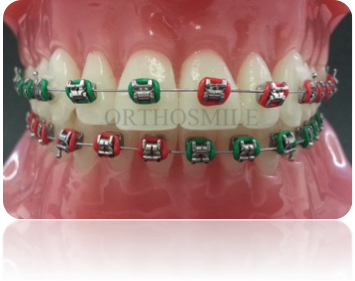
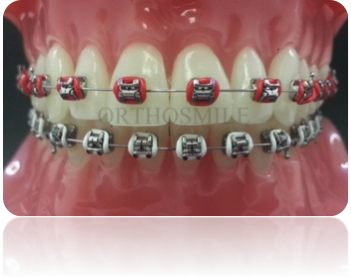
Varies by pattern: two by two, alternate, up and down, opposite half


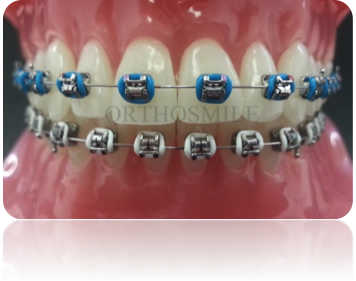
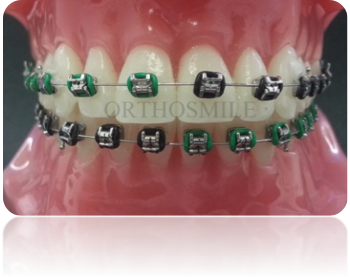
Varies by colour tone: bright and strong or pastel and cool
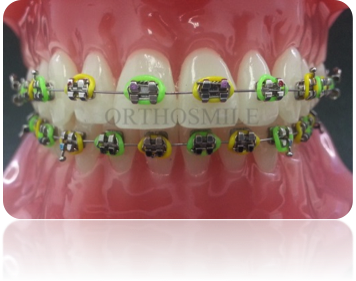

Simply go rainbow wild or colourless
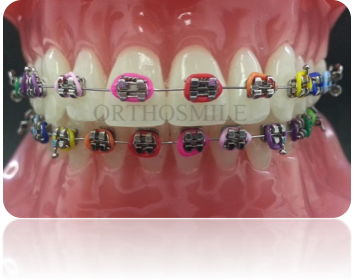
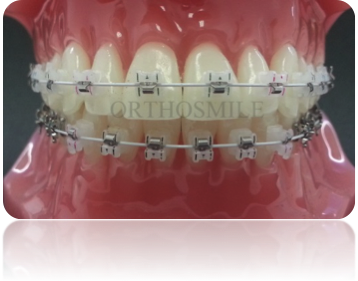
-
You may wish to choose colours that complement with your natural skin types, hair colour or coordinates with the clothes you often wear.
-
Darker colours tend to make your teeth looks whiter while lighter colours can intensify the natural yellow colour of your teeth.
Certain colours can be 'transformers colours'. For example white and transparent colours will turn yellowish and pastel blue will turn greenish after a while.
-
Keep your braces colour look vibrant longer by practising good oral hygiene.
Oral hygiene means taking care of your mouth, gums, and teeth. Brush your teeth after each meal is good and you can consider bringing a small portable toothbrush with you to brush after snack and meal.
Floss your teeth once a day promotes healthier gums. Flossing with braces can be a challenge initially. Use a floss threader to get the floss in between the gums.
Use mouthwash once a day which help to kill harmful bacteria that can cause tooth decay and gum disease. Rinsing with mouthwash is easy, quick, and gives you great breath.
-
Lastly, you get to refresh and change your colour on every braces review visit which is usually 4 to 6 weeks interval. So don’t fret if you choose the wrong colour ;)
Crowding of teeth
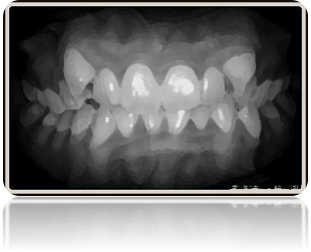
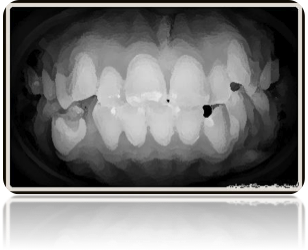
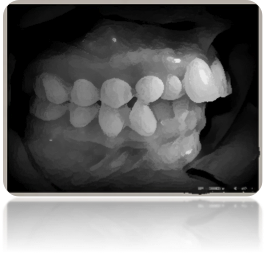
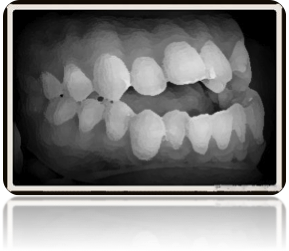
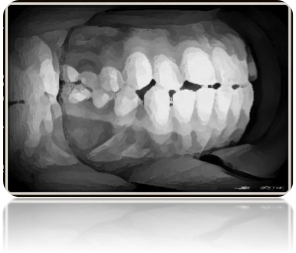




What to Do in Case of Emergency
Call our practice at (65) 6397 6880 if you break or loosen any of your appliances. Even if you have a regular appointment scheduled, call to notify us if you need an appliance repair visit.Outside working hours or on days we are closed, you can email us using the online message box under the "Contact Us" page and we will response to your query as soon as possible. Do remember to indicate your contact details.
Loose band or bracket
If a band or bracket comes loose, you may put orthodontic wax on it to lessen the irritation, otherwise you can generally leave it in place till your scheduled appointment. You can also call our practice so that we can arrange an earlier appointment for a repair.Wire Irritations
Discomfort caused by a wire on your braces can be resolved by covering the end of it with a small piece of orthodontic wax. If you cannot resolve the wire irritation, call our practice for an appointment.Lost Separators
Most patients lose a separator during their treatment and is usually not an emergency situation. You can call our practice to see if it needs to be replaced.Discomfort with Orthodontic Treatment
When your braces are first placed or when your routine adjustments are completed, you will likely to feel some pain, soreness or discomfort. You may take paracetamol while you adjust to your new braces. You can also call the practice or email us your concerns.Mouth ulcers
You can reduce the discomfort by using ulcer cream and by using the orthodontic wax to cover part of the braces adjacent to the mouth ulcers.To help irritated areas of the mouth heal, rinse with warm salty water or antiseptic mouthrinses.







